#new york history
Text

Walker Evans
Brooklyn Bridge, New York
1929
#modern art#american art#walker evans#evans#brooklyn bridge#brooklyn#new york city#new york#new york history#bridges#bridge engineering#art photography#cityscape#urban art#urban photography#urban landscape#urban history#art history
111 notes
·
View notes
Text
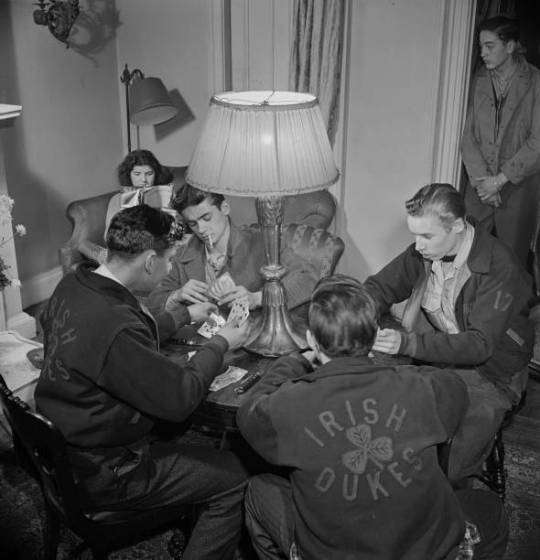
The Irish Dukes, 1950s
members of the 'Irish Dukes', wearing jackets with the gang's name on the back, sit around a table smoking and playing cards, New York City, New York, circa 1955. The Irish Dukes, based around 139th Street and Willis Avenue in South Bronx, were a gang in the 1950s. (Photo by Graphic House/Archive Photos)
#history#vintage#1950s#50s#fifties#50s fashion#vintage fashion#smoking#b+w#black and white#the irish dukes#new york#50s new york#historical photos#new york history#circa 1950
19 notes
·
View notes
Text

(Pictured: Carnations laid in honor of the dead at the sidewalk of NYU's Brown Building. Photo by Leanna Renee Hieber)
On March 25, 1911, a fire broke out on the top floors of the Asch Building. The Triangle Shirtwaist Factory Fire took the lives of 146 people, most of them women and girls. As a NYC tour guide of over 15yrs, I speak about this site with vehemence. Never forget the importance of modern labor laws and the lives lost before we gained these rights. Andrea Janes and I wrote about this site, and its importance in the capacity of residual haunting, in our book A HAUNTED HISTORY OF INVISIBLE WOMEN. Our chapter on the fire, Industrial Monsters, is up on the Boroughs of the Dead blog: https://boroughsofthedead.com/industrial-monsters-ghosts-of-the-triangle-shirtwaist-factory/
Please support union workers and legislation aimed at shoring up worker protections. Honor the dead.
#nychistory#a haunted history of invisible women#on this date#labor history#trianglefire#triangle shirtwaist factory fire#factory#haunting#hauntedhistory#tour guide#new york history#labor law#labor rights#unionize
113 notes
·
View notes
Text
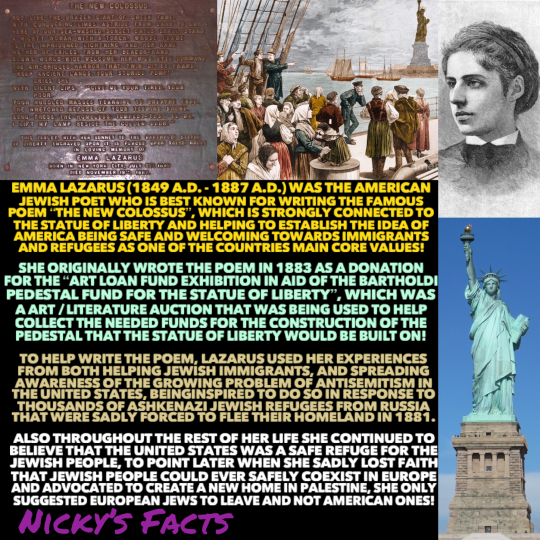
Hate like antisemitism, homophobia, racism, zionism, or sexism most never be tolerated, as once we allow hate to have a voice they will consume the tolerant and we then will lose the liberty that we adore so much.
🇺🇸🗽🇺🇸
#history#statue of liberty#emma lazarus#the new colossus#immigration#american history#antisemitism#homophobia#racism#zionism#sexism#womens history#landmarks#new york history#united states#historical figures#female author#poem#jewish history#poet#activist#refugees#lady liberty#new york city#women empowerment#writing history#wonder of the world#1800s#nickys facts
15 notes
·
View notes
Note
Can we have your analysis of NY governors since Rockefeller like you did with the NYC mayors.
That's a bit trickier, but sure! (Interesting choice of starting point. No Al Smith, no FDR, no Lehman, no Dewey - that's a lot of famous NY governors out of the picture.)
Governors below the cut, because this one is going to run long.

Nelson Rockefeller (1959-1973):
Certainly a politically successful governor - the man won four elections in a row! - Rockefeller was the last of his kind, the quasi-liberal Northeastern Republican to which he gave his name. At the same time, when you dig into his record, there is as much to be ashamed of as to be proud of.
In the interests of fairness, let's disuss the positives first: Rockefeller believed in taxing and spending on a grand scale, whether that was for public works, state parks, state aid to education (SUNY grew sixfold during his tenure), low-income housing, pensions for public sector workers, mass transit, or Medicaid. On non-spending issues, Rocky was an early supporter of abortion rights, state-level civil rights legislation, the ERA, environmental conservation, and a state-level minimum wage.
When it came to the monuments that he hoped would become his legacy, Rockefeller liked to build big. Unfortunately, when it comes to the negatives of his governorship, they are of a similar scale. Chiefly, the problem was that Rocky was a pretty consistent "law and order" politician - the laws that authorized "stop and frisk" and "no-knock" warrants were passed with his enthusiastic support, state police payrolls and budgets balooned in size, and he was a consistent supporter of the death penalty pretty much until the end.
But when it comes to "law and order," two monuments stand taller than all the others: Attica and the drug laws.

On September 9th, 1971, over a thousand incarcerated men (overwhelmingly men of color) seized control of the Attica Correctional Facility in a protest over living conditions and political rights. They took 42 correctional officers and staff hostages, issued a list of 33 demands, and then negotiated for four days in good faith. Refusing to meet with the inmates and unwilling to either remove the unpopular superintendent or grant amnesty for the uprising, Rockfeller instead sent in the state police, armed corrections officers (for some ungodly reason), and the National Guard and gave them free reign.
On the morning of September 13th, troopers dropped tear gas into the main yard and then just started shooting indiscriminately. In fifteen minutes, 29 inmates were murdered - including most of the uprising's leadership, who were targeted by name for execution - and so were 10 hostages. (Often shooting blindly into the billowing clouds of tear gas with shotguns, the troopers were so undisciplined that they wounded another five corrections officers and one state trooper in friendly fire incidents.) Another 85 inmates were wounded, and hundreds and hundreds of survivors were made to strip naked, crawl through mud and shit and broken glass, and then tortured by corrections officers.
Rockefeller covered all of this up. The governor claimed that the prisoners had committed "cold-blooded killings" of all the hostages, and particularly trapped himself by claiming that the prisoners had slit the throats of the hostages - medical examiners concluded that all of the hostages were killed by law enforcement bullets. Although forced by public opinion to establish a Special Commission to investigate what had happened, Rockefeller did his level best to ensure that the truth of what happened never got out (it did eventually come out, but it took years and many couragous whistleblowers and crusading lawyers to make that happen), to ensure that not a single trooper was held criminally resppnsible, and to avoid as long as possible paying any restitution to the families of the dead, let alone the survivors.
All because he didn't want to look weak on crime.
When it comes to the Drug Laws to which he put his name, it's hard to see them as anything less than a political stunt that ruined the lives of thousands and thousands of people. Rocky had previously supported liberal treatment and social services approaches to drugs, but he wanted to run for the Republican presidential nomination in 1976, so he did a 180 to burnish his "law and order" credentials.
Under his laws, selling as little as two ounces or merely possessing four ounces of opoids, cocaine, or marijuana would be punished with a minimum of 15 years to life and a maximum of 25 years to life. Over the decades since the enactment of the Rockefeller Drug Laws, some 150,000 people would be incarcerated for non-violent drug offenses in New York, over 90% of whom were black or Hispanic men. It took until 2009 for these laws to be dismantled.
All because he wanted to run for president.
Verdict: like Jekyll and Hyde. Both an asshole and not an asshole, depending on the issue.

Hugh Carey (1975-1982):
The first Democratic governor of New York in almost 20 years, Carey was elected in the Democratic landslide of 1974. And like a lot of "Watergate baby" Democrats (like one Joseph Robinette Biden), Carey was an odd blend of fiscal conservative and social liberal.
This applied most immediately and most significantly to his handling of New York City's Fiscal Crisis. The city was massively in debt, New York financiers were engaging in a capital strike, the President of the United States was openly hoping for NYC's financial demise in order to punish American liberalism, and the one thing everyone knew and no one wanted to admit is that someone had to pay for a bailout.
As governor, Carey did bail out NYC - but at the cost of the city not only giving the bankers everything they had demanded (public sector layoffs, wage freezes, subway fare hikes, the closure of public hospitals, libraries, and fire stations, and the end of free tuition at CUNY), but also of surrendering the city's fiscal autonomy. As quid pro quo for state funds, Carey pushed through the creation of the Municipal Assistance Corporation (MAC) to handle the city's bonds and the Emergency Financial Control Board (EFCB) to control the city's taxation and budgets. These two unelected bodies continued in existance for decades, and set a precedent for the state government to call the shots when it came to local NYC governance, even while NYC's economy funded the state government.
All this at the same time as Carey was cutting income, capital gains, and corporate taxes for the wealthy, creating the modern suite of tax breaks for developers, and keeping state spending below the rate of inflation. On the flip side, he did build a bunch of fancy public works like the Javits Center, Battery Park City, and the South Street Seaport to attract tourists back to NYC.
However, on social issues Carey was quite progressive. On both the death penalty and abortion rights, he stopped the state legislature from rolling back reforms forced on them by the courts. He made the de-institutionalization of the mentally ill and the provision of community-based services a signature issue - although not enough to prevent a rise in homelessness among the mentally ill. Unlike Rockefeller, he tried to do the decent thing when it came to the aftermath of the Attica Rising by pardoning the rioters. Like Rockefeller, he was in favor of environmental regulation.
Verdict: Mostly an asshole. Meeting baseline expectations for a Democrat doesn't cancel out fucking over NYC for a generation.

Mario Cuomo (1982-1994):
Writing about Cuomo the Elder is difficult, because for a generation of New Yorkers and others he represented liberal ideals and aspirations tbat were ultimately unconnected to the day-to-day business of governance. This was largely due to the way he exploded into national prominence with his "Tale of Two Cities" speech at the 1984 Democratic National Convention, which challenged the rosy rhetoric of Reagan's "Morning in America."
youtube
The problem is that, as governor, Mario Cuomo stressed "progressive pragmatism" and tried to straddle the line between liberal goals and business-friendly methods. As Saladin Ambar put it in American Cicero, "whereas Rockefeller oversaw a period of tremendous government expansion...Cuomo was later derided for having no big policy focus. His was an era of contraction, one of smaller progressive victories."
When we look at Cuomo's record, we see he prided himself on the "largest tax cut" in New York state history and balancing the budget through cutting spending, but also on expanding Medicaid to low-income children and pregnant women. He lowered the top income tax rate, but also increased the basic welfare grant. He trumpeted $500 million in state aid to education, but also spent $500 million to build new public prisons. He spent $850 million on environmental clean-up efforts, but $300 on paying down state debt.
Ultimately, the issue that defined Cuomo had nothing to do with economic policy or social spending - it was the death penalty. His opposition to the death penalty had cost him the mayoral election in 1977, but it won him the gubernatorial nomination in 1982 - both times in matchups against Ed Koch. As governor, he vetoed 12 different bills to restore New York's death penalty. Ultimately, it would be the issue that brought him down: running for a fourth term in 1994, Pataki attacked Cuomo for his oppositition to the death penalty. Highlighting a horrible case in which a child murder who had inexplicably been allowed to plead down to one count of manslaughter, and who then became a serial killer after serving his time in prison, Pataki hammered Cuomo as being soft on crime and the incumbent ended up winning a grand total of one county north of Yonkers (and losing Staten Island in the process).
Also, I have no patience for Cuomo's "Hamlet on the Hudson" bullshit when it came to seeking the Democratic presidential nomination in 1988 and 1992. If you're going to run, have the guts to say so.
Verdict: I'm not mad, I am disappoint.

George Pataki (1995-2005):
The great irony of the 1994 gubernatorial election is that Pataki would go on to reinstate the death penalty in his first year as governor - only to see the New York Court of Appeals declare it unconstitutional. Pataki prided himself on being "tough on crime," and ended up pushing through 100 laws increasing criminal penalties - which he erroneously claims caused crime rates to decrease.
When it comes to economic policy, Pataki was just as lousy as any other Republican - cutting income taxes on the rich and corporate taxes more than any other governor before him. This at the same time that he cut a million ooor people off of welfare. His commitment to the economic illogical of balanced budgets led him to propose significant spending cuts in 2003 even as New York was still wrestling with the economic fallout of 9/11, only to be overriden by the state legislature.
His social policies were somewhat better. There was a modest expansion of health care for the working poor through SCHIP, he supported gun control, he supported abortion rights, he was in favor of anti-discrimination laws to protect LGBT+ people but opposed gay marriage (which was fairly good for a Republican in the early 2000s), he did put some money into environmental programs. His education policy rather sucked - he was strongly pro-charter schools (boo) and micro-managed CUNY to get rid of remedial education.
Verdict: bit of an asshole, but less so than most Republicans.
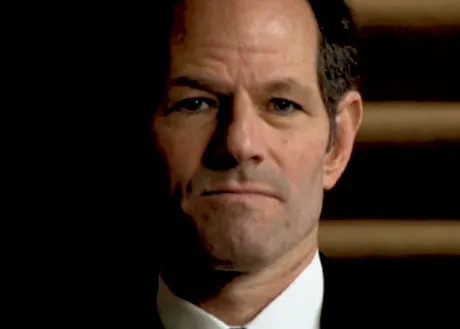
Eliot Spitzer (2007-2008):
It's hard to find much to say about Spitzer's time as governor, because he wasn't around for very long. Elected on the basis of his reputation as a crusading Attorney General, Spitzer came into office saying that he would "change the ethics of Albany." He spent most of his brief time as governor feuding with the (corrupt and convicted if it wasn't for the Supreme Court) leadership of the state legislature. While a lot of his proposals were quite good, Spitzer's "steamroller" strategy was pretty much ineffective in getting legislation passed (hey, turns out the Johnson Treatment is bullshit) and it's hard to point to a major accomplishment of his tenure as governor.
But what Spitzer is primarily remembered for is the prostitution scandal that brought him down. As someone who thinks sex work should be legal, my main issue with his behavior is that he was "a real weasel" about not wanting to use condoms and used his money to get his way. This is an occupational health and safety issue for sex workers, being able to insist on condom use and reject clients who refuse to use them is a labor rights issue for sex workers, and clients who try to use their wealth and power to undermine the autonomy of sex workers should be blacklisted.
Verdict: an incompetent and an asshole to sex workers.
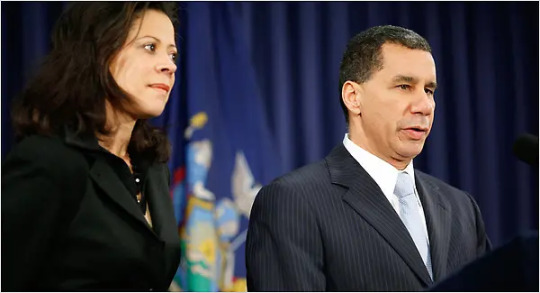
David Paterson (2008-2010):
Suddenly thrust into the limelight after Spitzer's resignation, David Paterson's tenure as governor started extremely unluckily, as both he and his wife admitted to having extamarital affairs the day after his inauguration - something that wouldn't have been as big a deal if it hadn't been for the Spitzer scandal intensifying the level of media scrutiny directed at the personal morality of elected officials.
He then had two weeks to negotiate the state budget at the height of the Great Recession, which hit particularly hard due to the outsized importance of Wall Street to New York's economy and state finances. This was never going to be a good budget, but it was highly noticeable that Paterson's budget leaned heavily on spending cuts rather than using state reserves or taxing the wealthy, while providing significant tax cuts to middle-class and affluent homeowners.
This was rather surprising given Paterson's liberal roots as a former Dinkins staffer. It was similarly surprising that when Paterson was called upon to appoint someone to fill the U.S Senate seat left vacant by Hillary Clinton becoming Secretary of State, that he went with Blue Dog Kirsten Gillibrand rather than Caroline Kennedy (the leading scion of the Kennedy family in New York) or Andrew Cuomo (the heir to his father's legacy). This led to something of a feeling that Paterson was turning out to be something of a liberal in name only.
The main issue where Paterson's liberalism seems to have remained strong was gay marriage, where Paterson did something of an end-run around the deadlocked state legislature by ordering New York State agencies to recognize out of state marriage licenses from same-sex couples. While successful in his efforts, this didn't help Paterson win support within the state legislature for a statutory legalization of gay marriage, and the bill went down to a 38-24 defeat in the State Senate.
Ultimately, however, I think Paterson's tenure as governor was hamstrung by the deadlock in the State Senate, which was evenly split between Democrats and Republicans with no lieutenant governor to break the tie (thanks to some truly stupid decisions by state courts on the issue). While most of the chaos had to do with two truly appalling conservative Democrats going over to the Republican side in exchange for personal considerations and wasn't really Paterson's fault, it did prevent him from achieving many legislative wins ahead of the primary election in 2010 - although two late-breaking scandals really did the fatal damage to his further political hopes.
One unanswered question is to what extent Paterson was knifed by then-Attorney General Andrew Cuomo, either/both in revenge for being overlooked for the U.S Senate and/or to clear the way for Cuomo's 2010 primary run for governor. After all, it was Cuomo who was handling the investigations into Paterson, who torpedoed Paterson's attempt to end the Senate crisis by appointing a new lieutenant governor, and presumably Cuomo who lobbied Obama to persuade Paterson to drop out. Moreover, given Cuomo's later penchant for conservative Democrats enabling Republican control of the State Senate, it's hard to avoid conspiracy theorizing that he had something to do with Monserrate and Espada's parliamentary coup.
Verdict: while Paterson was dealt the worst possible hand when he became governor, he played it badly. Kind of an asshole.

Andrew Cuomo (2011-2021):
In the interests of full disclosure, it's going to be very difficult for me to be objective about Andrew Cuomo since I was involved in several efforts to defeat him for public office and I personally loathe the man. So I'm going to try to focus as much as possible on what he did as governor of New York, because hopefully the focus on concrete actions will keep me from going off the rails.
I think the first thing to start with is that Cuomo deliberately undermined Democratic governance of the state of New York by engineering the formation of the Independent Democratic Conference, a group of conservative Democratic state senator who handed back control of the State Senate to the Republicans after Democrats won control of that chamber in the 2012 election.
Cuomo betrayed his own party and the policy agenda he nominally supported and had run for office on because he didn't want to be pressured by the left wing of the Democratic Party on progressive priorities and preferred to cut "moderate compromises" with the Republican leadership. Cuomo maintained this unholy coalition until it became a stumbling block to his hopes of winning the Democratic presidential nomination, at which point he terminated it just before the IDC's members were swept out of office by an enraged electorate.
As baseline expectations for Democratic elected officials go, I feel that supporting Democratic control of government and opposing conspiracies to hand over control of government to the Republican Party is about the minimum.
The second thing to understand about Cuomo is that while he has a long list of seemingly progressive accomplishments - gay marriage, gun control, marijuana legalization, paid family leave, and a $15 minimum wage, etc. - virtually all of them are cases in which actual progressive groups and elected officials had been pushing for years, where Cuomo had blocked their efforts either through executive inaction or outright opposition to legislation, and where he eventually took credit for compromise measures that repeatedly turned out to have regressive stings in the tail that made them much weaker.
And all of that is before he was brought down by his own manifest corruption, his total incompetence on COVID despite becoming a media darling on the issue, and his long history of sexual harassment and assault.
Verdict: the biggest asshole in New York political history.

Kathy Hochul (2021-present):
Normally, there wouldn't be much to say about a brand-new governor who was unexpectedly elevated to office by their predecessor's resignation in disgrace. For a good while, all that Hochul seemed to aspire to be was "not Andrew Cuomo" - not a bully, not a misogynist, willing to listen to everybody.
More recently, we've learned a bit more who Hochul is through how she's chosen to spend her political capital. In all but one case - building more affordable housing in suburban upstate New York - Hochul has shown herself to be a relentlessly conservative Democrat, who's willing to spend political capital in order to dismantle bail reform or try to get a conservative judge appointed to the Court of Appeal or appoint a Republican to lead the public power utility.
Except the problem for Hochul in her attempt to be Andrew Cuomo but without the misogyny is that Democrats control both houses of the legislature now, and the legislature from the leadership to the rank-and-file is no longer subservient to the governor as they were under Cuomo. When Hochul put up LaSalle for the Court of Appeals, she was repeatedly humiliated by getting stomped in committee and floor votes. When Hochul tried to appoint Justin Driscoll to the New York Power Authority, he was defeated too. And sadly, when Hochul tried to get her housing proposal by including it in the budget, suburban legislators stripped it out.
That's kind of the problem with Hochul: she's not very good when it comes to the core skills of a politician. She's not good at reading the room, otherwise she never would have nominated LaSalle after labor told her that anyone but him would be acceptable. She's not good at counting votes, otherwise she wouldn't have pushed votes on LaSalle and Driscoll and the housing package that she ended up losing by lopsided margins. And she's not very good at campaigning either, otherwise she wouldn't have needed to be bailed out by the progressives at the last minute in the 2022 election.
Verdict: an asshole, but thankfully not as good at being an asshole as Cuomo was.
40 notes
·
View notes
Text

Women reading stock ticker tape at the Waldorf Astoria hotel in 1918.
92 notes
·
View notes
Photo

On This Day in New York City History February 20, 1895: Former slave, abolitionist and civil rights advocate Frederick Douglass (February 1818 - February 20, 1895) passes away at the age of 77 or 78.
Douglass escaped slavery via the Underground Railroad arriving in NYC in 1838. Douglass would figure heavily in the history of NYC's abolition movement leading up to and during the Civil War. Douglass gave a series of speeches at Cooper Union including The Proclamation and the Negro Army which was given on February 3, 1863.
Post Civil War, Douglass continued to work for the freedom of not only blacks but of women in the areas of voting rights and would lend his support to Ida B. Wells' anti-lynching campaign.
Douglass would pass away at either the age of 77 or 78 in Washington D.C.
#FrederickDouglass #UndergroundRailroad #BlackHistory #BlackStudies #BlackHistoryMatters #AfricanAmericanHistory #AfricanAmericanStudies #CivilRightsHistory #NewYorkHistory #NYHistory #NYCHistory #History #Historia #Histoire #Geschichte #HistorySisco
https://www.instagram.com/p/Co55GyMuygs/?igshid=NGJjMDIxMWI=
#Frederick Douglass#Underground Railroad#Black History#Black Studies#Black History Matters#African American History#African American Studies#Civil Rights History#New York History#NY History#NYC history#History#Historia#Histoire#Geschichte#HistorySisco
51 notes
·
View notes
Text


Lord Bellomont, Governor of New York from 1698 to 1700, was a major financial backer of William Kidd's privateering commission to hunt for pirates and French ships. It was also Lord Bellomont that arrested and took Kidd in custody after he returned to the colonies to clear his name of piracy.
While Lord Bellomont likely had no intention of helping Kidd prove his innocence, the Governor at least provided documentation and evidence that would have helped Kidd's defense in his trial. Kidd had presented his French passes to Lord Bellomont, along with his testimony/reaccounting of his journey. These passes were vital to show that the ships Kidd and his crew captured were legal under his privateering commission. Lord Bellomont took those passes and sent them in a letter to London. It was at this point that the passes seemed to have vanished and could not be located during Kidd’s trial. These passes would not be relocated until many centuries later and can now be found in the Public Record Office in London.
It is highly likely these passes were deliberately hidden away so that Kidd had no backing to his defense - many officials were needing his trial to sentence him with a guilty verdict. Captain Kidd did not deserve this injustice, and his name needs to be cleared in history - he was no pirate!
-
It has been a month since our inquiry has been sent to the Ministry of Justice on behalf of Captain Kidd. We are hoping to hear something from them soon, as it was recommended to wait about 4 weeks to hear back. The pardon movement will provide an update when we hear from them!
-
If you wish to support the movement, please consider liking this + following us here! We also take donations to help fund this movement on GoFundMe.com (search ‘Pardon Captain Kidd’). Check out our website for more information on the movement as well at pardonwilliamkidd.com
#captain kidd#william kidd#kidd#pardon captain kidd#history#pirate history#american colony history#american history#scottish#captain#nautical history#nautical#pirate#privateer#pardon#new york history#bellomont
8 notes
·
View notes
Text
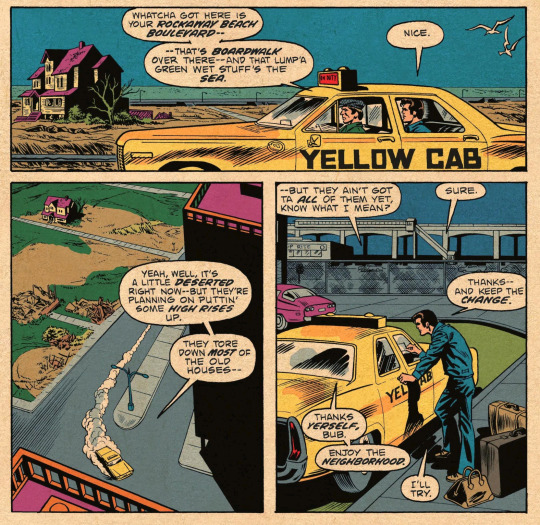

Ross Andru is one of my favorite Spider-Man artists because he was uniquely focused on making New York a real place. This time he went too far by drawing an actual house in Near Rockaway as the home of a supervillain. The actual owner threatened to sue Marvel after kids kept coming around looking for the Mindworm.
Some great research has been done ^^^ to find the house in question in old photos.
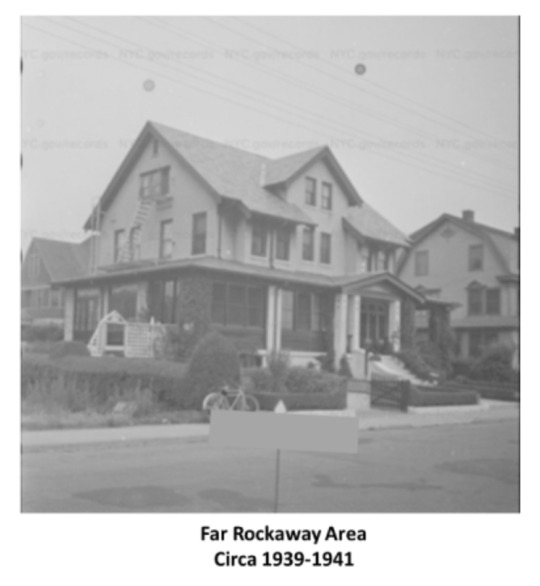

If you look at the 1940s photo on the left you can see it's clearly has neighbors but the 1975 photo (a year after the comic) the whole area is empty. This is where we get into NYC's long history of turning Rockaway into slums post WWII and then using urban renewal as an excuse to bulldoze neighborhoods and replace them with high rise project housing.
There's a deep history surrounding that single holdout house in 1974.
20 notes
·
View notes
Text

Smithsonian National Museum of African American History and Culture
#breakdance#viewmaster#70s#hip hop#hiphop#break dance#moonwalk#African American history#Smithsonian#history#New York history#dance
7 notes
·
View notes
Text
Well, as if my plate for The American Icarus wasn’t already full, I’ve decided to include yet another chapter, covering yet another insane event. Woohoo!
Consequently, I now have a new goal: figure out who this Captain Kennedy is, who’s noted in these proceedings of the New York Provincial Congress involving [then captain of artillery] Alexander Hamilton getting permission to go search Kennedy’s ship—and any other ship—in the harbor for some men who had deserted!
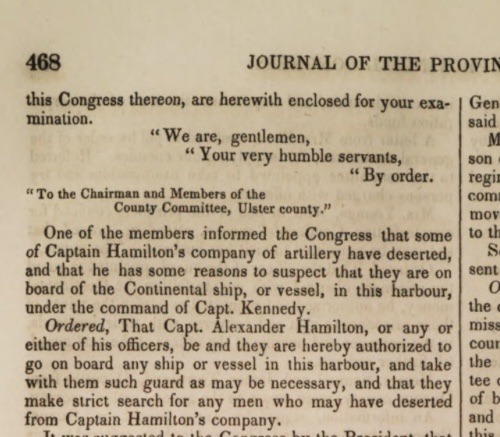
One of the members informed the Congress that some of Captain Hamilton’s company of artillery have deserted, and that he has some reasons to suspect that they are on board of the Continental ship, or vessel, in this harbour, under the command of Capt. Kennedy.
Ordered, That Capt. Alexander Hamilton, or any or either of his officers, be and they are hereby authorized to go on board any ship or vessel in this harbour, and take with them such guard as may be necessary, and that they make strict search for any men who may have deserted from Captain Hamilton's company.
Source: Journals of the Provincial Congress of the State of New York, vol. 1, pg. 468 [link here]. Also see The Papers of Alexander Hamilton, vol. 1, 1768-1778 Ed. Harold C. Syrett, Columbia University Press, 1961. pg. 185 [Founders Online link]
This man’s life just feels like a soap opera I swear. How was this real. You really can’t make this shit up. The fact that I can so easily place his life into the structure of a long-form narrative with little creative liberties is truly insane to me. But I’m looking forward to writing this into TAI now—just imagine the conversations that were had between Hamilton and his officers about this. Or, the visual of Hamilton storming onto this captain’s ship, with a guard and his officers in toe??
The lack of context brings to mind too many questions for me to count, but that’s where the fun of writing historical fiction comes into play I guess. But honestly a time machine in this instance would be wonderful.
#grace’s random ramble#amrev#alexander hamilton#the american icarus#TAI#american history#writers on tumblr#historical alexander hamilton#historical fiction#amwriting#historical research#captain hamilton#new york history#the american revolution#writing community#american revolution#american revolutionary war#history#writer things
5 notes
·
View notes
Text

Edward Steichen
Brooklyn Bridge
1903
#edward steichen#steichen#brooklyn bridge#american photography#20th century photography#bridge#night view#bridges#new york history#new york city#american photographer
58 notes
·
View notes
Text




Welcome to New York’s legendary hotel for women, the Barbizon.
Liberated after WWI from home and hearth, women flocked to New York City during the Roaring Twenties. But even as women’s residential hotels became the fashion, the Barbizon stood out; it was designed for young women with artistic aspirations, and included soaring art studios and soundproofed practice rooms. More importantly still, with no men allowed beyond the lobby, the Barbizon signaled respectability, a place where a young woman of a certain class could feel at home.
As the stock market crashed and the Great Depression set in, the clientele changed, though women’s ambitions did not; the Barbizon Hotel became the go-to destination for any young American woman with a dream to be something more. While Sylvia Plath most famously fictionalized her time there in The Bell Jar, the Barbizon was also where Titanic survivor Molly Brown sang her last aria; where Grace Kelly danced topless in the hallways; where Joan Didion got her first taste of Manhattan; and where both Ali MacGraw and Jaclyn Smith found their calling as actresses. It was home to American royalty like Liza Minnelli and Little Edie Beale, who made their way here as they attempted life beyond their famous family homes. Students of the prestigious Katharine Gibbs Secretarial School had three floors to themselves, Eileen Ford used the hotel as a guest house for her youngest models, and Mademoiselle magazine boarded its summer interns there, including a young designer named Betsey Johnson.
x
#barbie#barbizon#barbizon hotel#history#women's history#new york hotel#history post#womens history#new york history
8 notes
·
View notes
Text
New Year’s Eve WIP y’all:
Steve was being pressed in on every side. He hadn’t told anyone where he was going to be, not even Nancy. He’d just mentioned that he was going to make some stops on his way back from Boston, take in the sights of the coast. Robin had seen right through him.
“Eddie will be playing at King Tut’s Wah Wah Hut on New Year's Eve. 112 Avenue A, at 7th Street.”
“How do you know I’m even going to be in New York?”
“Because I know you, my sweet queer baby. Go. Get your man.”
So here he was. The venue couldn’t have a capacity larger than 50, but people were on each other's shoulders, squeezed in wall-to-wall, chest-to-back, legs between legs, drinks held high to prevent spilling.
Steve tried to push through, but it was too crowded. All he could do was stand and watch Eddie being transcendent on the stage.
Eddie was coated in glitter, it was in his hair, across his bare shoulders, dripping off of him as he sweat. He looked immortal. Henry Creel had wanted to stop time, but he’d never come as close as Eddie was right here, eternally caught in the blue light of King Tut’s Wah Wah Hut.
#eddie munson#joseph quinn#steve harrington#stranger things#steddie#joe keery#stranger things 4#joe quinn#steddie fluff#fanfiction#new years eve#king tuts wah wah hut#new york history
26 notes
·
View notes
Text

All hail the King of Skull island!
🏝️🦍
#history#king kong#new york city#komodo dragon#united states#movie history#komodo island#universal studios#skull island#merian c. cooper#american history#1920s#1930s#islands of adventure#behind the scenes#animal history#empire state building#west indies#american culture#historical figures#american museum of natural history#new york history#movies#animals#bronx zoo#expedition#nickys facts
4 notes
·
View notes
Text

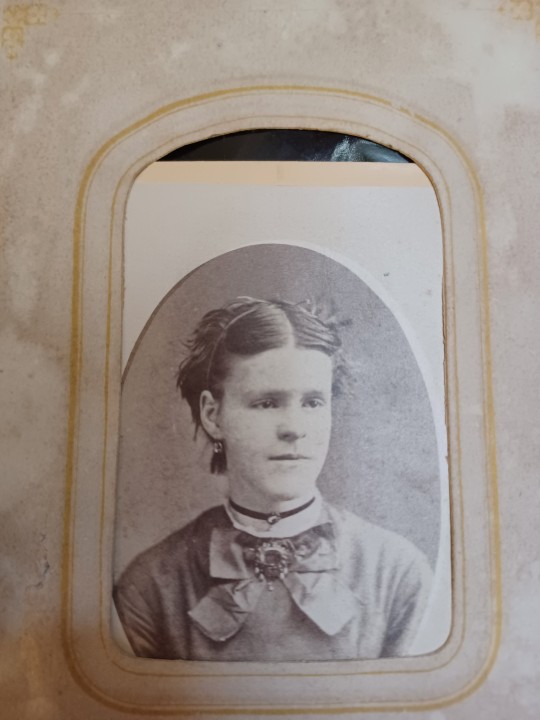
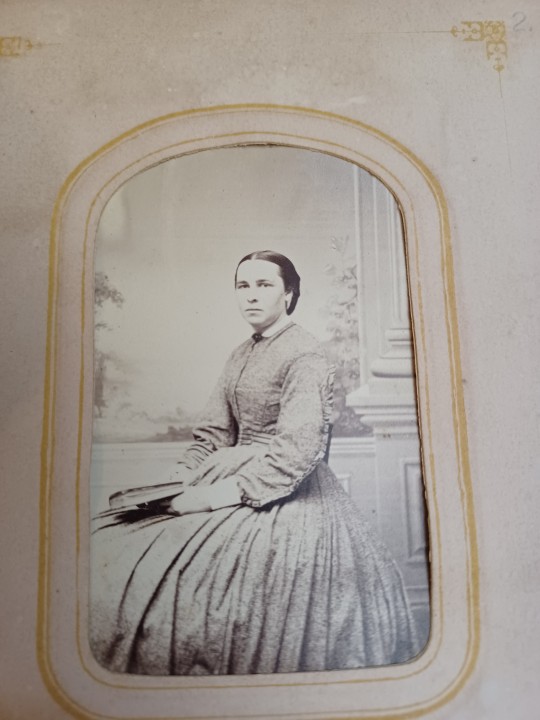
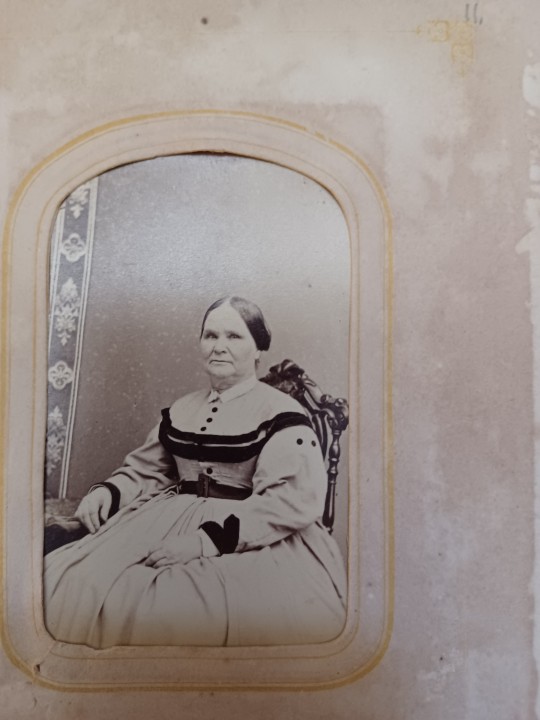
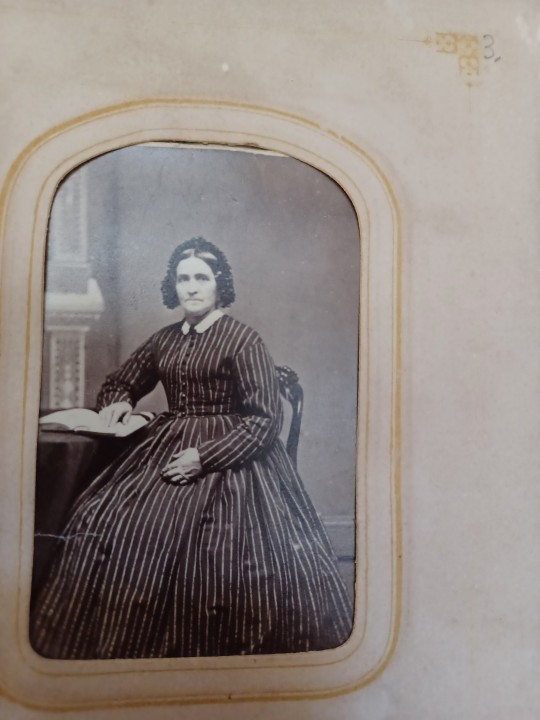
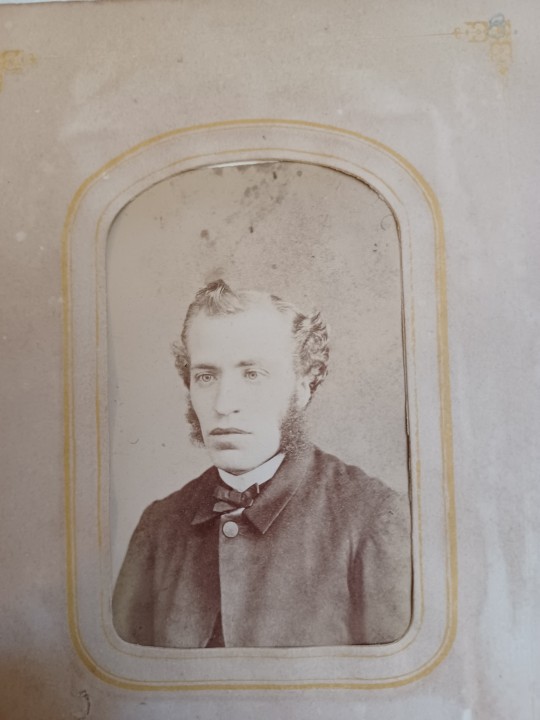



Some lovely Victorian-ish Era fashion, in a beautiful album from a relative.
I'm fascinated by the little sleeve ruffle in the third picture.
#victorian fashion#american fashion#victorian dresses#tin type photography#gilding#album#fine binding#book clasps#victorian hair styles#women short hair#photo album#new york history#history#vintage photography#vintage dress
8 notes
·
View notes